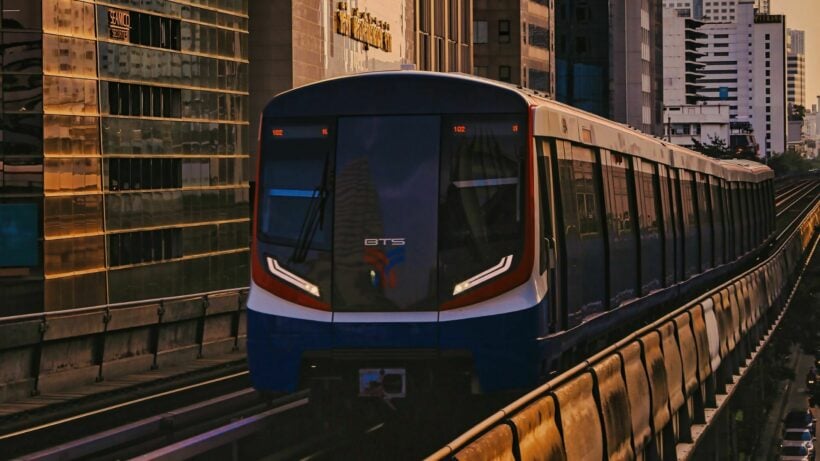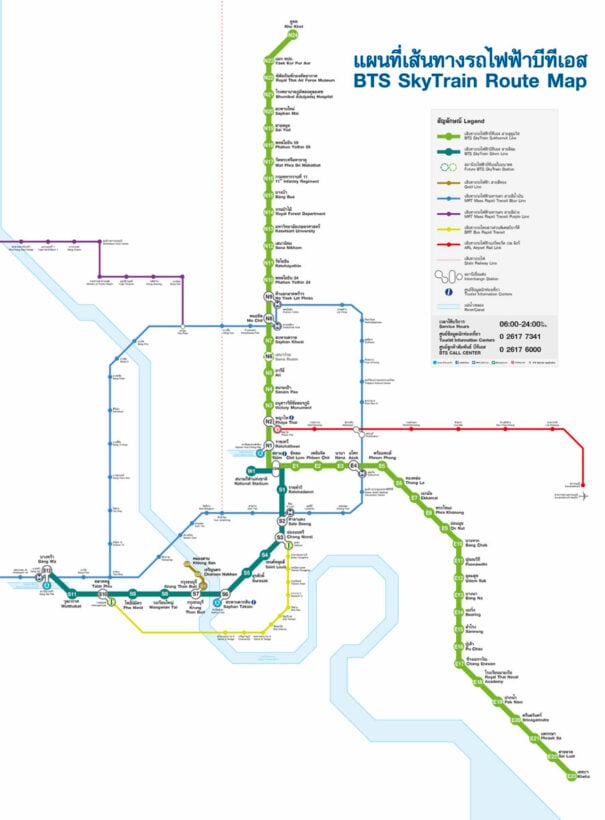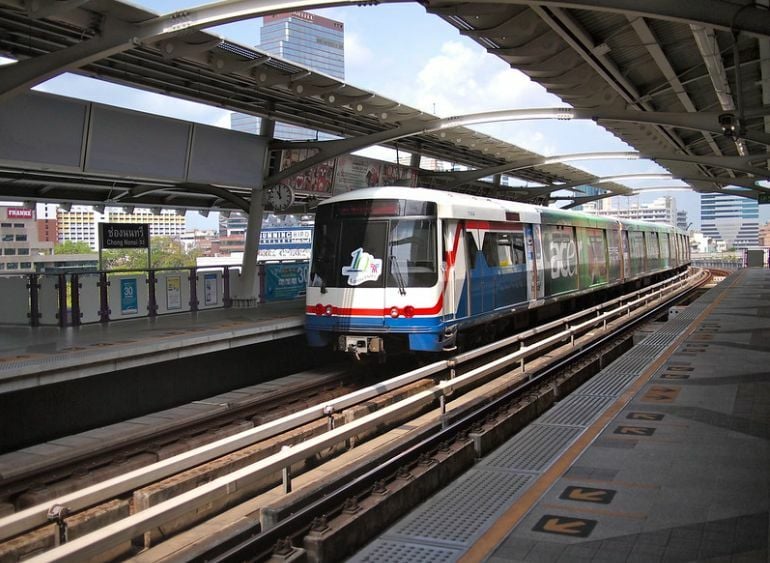What to know before taking the BTS Skytrain and MRT Metro

The BTS Skytrain, and MRT Metro (mostly underground) are lifesavers in Bangkok’s heavily congested traffic, but taking public transportation in a new country can be daunting for tourists or people moving to a new place. By using the fast, air-conditioned trains, you can avoid being stuck in the crazy traffic, taxi drivers demanding high rates, and the vast yet difficult-to-navigate bus system.
The BTS and MRT have been extensively expanded since making their debuts, with more routes planned in the future. Currently, there are many stations being built but are yet to be completed, so we will focus on the current MRT Blue Line, BTS Sukhumvit and Silom Lines, and the Airport Rail Link.
The Thaiger recommend that readers buy a pre-paid card for the trains. Sadly, it’s not one card that rules them all, so you will need three different cards because they’re run by different companies. The cards will help you save a lot of time when you’re travelling in Bangkok. You can load it with money, or buy a set of trips. You can pay for single journeys too, and you have two options.
But you can also simply pay at the vending machines at all stations using coins or bank notes, or you could pay over the counter where staff can serve you and point you in the right direction.

BTS Skytrain
The BTS Skytrain, which first opened in 1999, has two main lines: the Sukhumvit, and the Silom Line, with a total of 60 stations. The Skytrain costs 16 baht for one station. So, if you ride the entire route it will cost you 59 baht.
The Sukhumvit Line runs from Kheha to Khu Khot. This line covers many key locations such as Mo Chit, and Asok, which connect to the MRT Blue Line, and Siam, which connects to the BTS Silom Line. Areas from Siam to Ekamai are where most of the department stores, nightlife, hangout spots, and businesses are located. You can connect to the Airport Link from the Green Line too, at Phaya Thai Station. You can also get to Chatchuchak Weekend Market at Mochit Station.
The Silom Line runs from National Stadium (MBK) to Bang Wa. This line covers areas like the Chao Praya River, Icon Siam, Asiatique, and where the two Central Business Districts, Sathorn, and Saladaeng (Silom) are located.

MRT Metro
The MRT Metro has two lines, Blue and Purple. The Blue Line covers 38 stations, while the Purple Line covers 16 stations, and an overall total of 54 stations. The Purple Line will take you from Tao Poon to Khlong Bang Phai. This line covers the outskirts of Bangkok, where most locals live.
However, the Blue Line is where most of the main stations are, and it goes in a loop rather than a straight line. Bang Sue Station connects to the Bang Sue Grand Station, which replaces the classic Hua Lamphong. You can also get off at Chatchuchak Station for the weekend market or go for a run in the park.
A few stations down is Phetchaburi, where Makkasan Airport Link is connected if you need to catch a flight from Suvarnabhumi Airport. The next station after Petchburi is Sukhumvit, better known as Asok. Asok is one of the key areas in Bangkok and you can connect to the BTS Station here. A few stations down the line is Lumphini, which is home to a big beautiful park. Saladaeng, or Silom is one station from Lumphini.

Airport Rail Link (ARL)
There are 8 stations in total. You can connect to both MRT and BTS from the Airport Link. This makes travelling in Bangkok a lot easier, especially if you fly to and from Suvanabhumi Airport. Makkasan Station connects to Phetchburi MRT Station, while Phaya Thai Station connects to BTS Phaya Thai.

Latest Thailand News
Follow The Thaiger on Google News:


























